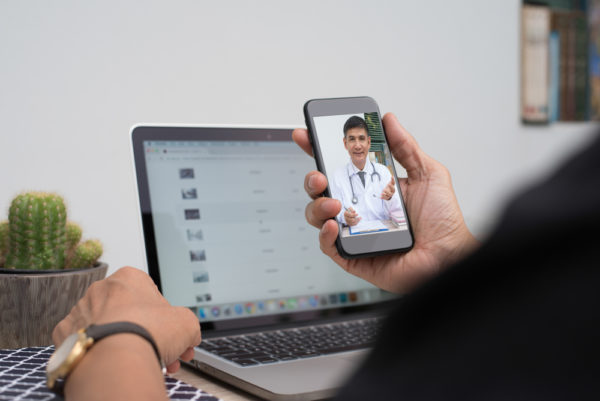Is Telehealth the Future of Medicine?
Telehealth is the use of electronic information and telecommunications technologies to support long-distance clinical health care, patient and professional health-related education, public health and health administration. In short, telehealth provides a broad range of healthcare activities and services that can be performed remotely. Telehealth is often confused with telemedicine. Telemedicine requires a physician, while telehealth does not. More on telemedicine in a later article.

Mobile Devices Make Telehealth More Accessible
Remote medical care is not a new idea. Early examples of telehealth can be seen throughout history. In 1876, Alexander Graham Bell placed a call to his assistant, Mr. Watson. Bell sought medical advice after he spilled acid on his pants.
Interest in telehealth has risen as a result of increased ownership of mobile devices. Mobile devices are helping to increase the accessibility to medical professionals and reducing the cost to do so. Mobile apps (for both cell phones and smart watches) are playing a significant role in ushering in telehealth services.
For example, many smartwatches can monitor the vitals of the wearer. This information is stored on a cell phone which can then be shared directly with a medical professional. The collected data provides insight into a person’s health and can be used for routine patient monitoring. Apps like these run in the background and are easy to set up.
Another advantage for telehealth provided by mobile devices is access to high-quality video/phone conferencing equipment. Traditional conference equipment can cost $1000s and are not mobile. They also require a good internet if video conferencing is required. With mobile devices, powerful cell signals are all that’s required to send or retrieve information, start a phone call and even video conference, all from the palm of a patient’s hand.
Telehealth May Help Reduce the Effects of Population Growth on Medical Providers
Population growth from 2008-2030 is set at 20%, which equates to 363 million people. At these rates, it’s predicted that there will be a shortage of healthcare professionals, particularly in rural areas. Increased population growth would also mean increased time spent in medical offices in densely populated areas. Appointment availability could potentially be affected as well. Telehealth and telemedicine may offer a solution.
Below are a few stats from the Pew Research Center:
- 92% of 18- to 29-year-olds own a smartphone
- 64% of lower-income Americans own smartphones
- 73% of Americans have broadband internet services at home
- At least 51% of own a tablet computer
With such large amounts of people in the US with mobile and internet access, connecting patients to the right resources and professional advice remotely becomes more viable. Telehealth is especially beneficial for older demographics and for those who have trouble traveling. Follow-up appointments and routine monitoring could be facilitated by mobile apps. Medical consults for non-emergency/non-life-threatening illnesses can be done from home. This could save patients time on office visits and medical professionals could provide service to more patients in a day.
Final Thoughts
So, is telehealth and remote medical care the future of medicine? Based on the popularity of health monitoring apps and the need for convenient healthcare, it would seem so. Before telehealth can become the widespread norm, however, there are some challenges that would need to be addressed.
One challenge, for example, is that current Medicare Law requires that “patients be in an originating site when telehealth services are furnished”. This would require building these facilities in areas accessible to people in rural or low population areas. Currently, the highest concentration of these facilities is in major cities and densely populated areas. Medicare law also prevents “enrollees and dual eligible from accessing telehealth services in their homes”. These have been described as the greatest barrier to expanding Medicare telehealth services.
Call us or contact Progressus Revenue for more information about our medical billing strategies, practice management solutions and ancillary care programs.

